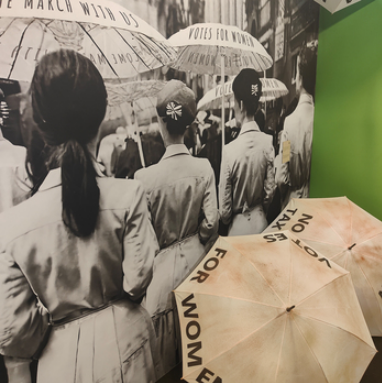From the sun-kissed pharaohs of ancient Egypt to the rainy streets of 18th-century London as well as the modern metropolises of today, the history of the umbrella is a fascinating journey through time and technological development.
The oldest depiction of portable sun protection appeared around 4,500 years ago in Egypt, where it was mostly reserved for rulers. The distinguished paleness in Japan was too for thousands of years protected by the dainty paper umbrella Wagasa – the colorful symbol of traditional Japanese craftsmanship. The Japanese paper umbrellas were first brought to Japan from China, during the Heian period (794-1185).
The first written mention of an umbrella in Europe dates back to the year 800. At that time, Abbot Alcuin of Tours sent one to Bishop Arno of Salzburg with the note: “I am sending you a protective roof so that it can keep the rain off your revered head”.
Finally, with the merchant travelers, the umbrella came through Persia to Greece, to Italy and to the entire Europe. At that time though, people liked to have their hands free for arguments, which is why the umbrella fell out of fashion until the late Middle Ages. Its general use in Europe became popular when Katharina von Medici married Henry II of France in 1533 and brought her Italian-style sunshades to court.
The Parisian bag maker Jean Marius, noticed that rainy days were ruining his customers’ expensive wigs. In 1709, Marius developed a lightweight, folding umbrella with an elegant look that became very popular among the Parisian upper class and even esteemed by King Louis XIV.
Around 1750, Jonas Hanway encountered resistance when bringing the Paris umbrella with him to London. His fellow citizens were speechless, even shocked. In 18th century England, carrying umbrellas was taboo – especially for men. It represented weakness, feminisation and – and this was perhaps the most important reason – France. Hanway did not let the reactions of his contemporaries influence him and instead suceeded in establishing the umbrella as the indispensable companion of the British gentleman.
However, its weight remained a major problem – until Samuel Fox, another Englishman, invented the metal frame in 1852. The weight of an umbrella was reduced to less than one kilogram. Partially thanks to duty-free raw materials from the colonies, England could now produce umbrellas cheaply – with its manufacturing cost often lower than a penny.
The umbrella became political among the suffragettes activists in the late 19th and early 20th centuries who campaigned for women’s suffrage and often drew attention through civil disobedience and protest actions. They printed their demands on umbrellas and turned feminism into a movement.
After a not fully healed war injury, Hans Haupt found it difficult to carry his walking stick as well as an umbrella at the same time. In 1928 Hans Haupt revolutionized the market with his folding pocket umbrella “Knirps” – the first umbrella with a collapsible frame. The little miracle umbrella experienced a real boom in the fifties.
From the French Revolution to the beginning of the 20th century, almost 1,400 more patents were filed. The innovative strength of the industry with ultra-light materials, sophisticated automatic mechanisms and modern materials and coatings now also offers advertising companies endless possibilities for every customer and occasion.








